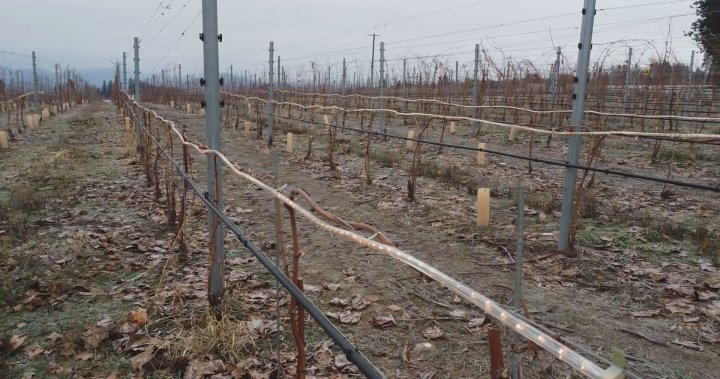Quails’ Gate Winery in West Kelowna, British Columbia, is piloting a groundbreaking approach to winter vineyard protection, leveraging infrared technology to combat the harsh Canadian winters. This innovative method employs infrared vacuum LED tubes, strategically positioned amongst the vines, to generate heat directly at the plant level rather than warming the surrounding air. This targeted approach aims to maintain vine temperatures above the critical freezing point, mitigating the devastating effects of extreme cold on delicate buds.
The underlying principle of this technology lies in the unique properties of infrared radiation. The infrared vacuum LED tubes emit a spectrum of light that is readily absorbed by the vine’s tissues, effectively converting light energy into heat. This localized warming creates a microclimate around the vine, insulating it from the damaging effects of sub-zero temperatures. Conventional methods, such as wind machines, attempt to raise the ambient temperature, a less efficient and more energy-intensive process. By focusing the heat directly on the vines, this infrared technology provides a more precise and effective solution for cold protection.
The impetus for this innovative solution stems from the increasing frequency and intensity of extreme weather events, including severe cold snaps, that pose a significant threat to the viability of viticulture in regions like the Okanagan Valley. Two recent cold snaps have caused catastrophic bud loss in the region, underscoring the vulnerability of grapevines to extreme temperatures. The potential for severe economic losses due to crop damage has spurred the search for more effective and sustainable methods of cold protection. This infrared technology offers a promising solution, providing a crucial buffer against the vagaries of the climate.
The financial investment associated with implementing this infrared technology is substantial, ranging from $10,000 to $20,000 per acre. However, the potential for long-term cost savings and improved crop yields makes it a compelling investment. The cost of replacing a lost crop due to frost damage can easily exceed the initial investment in infrared technology. Furthermore, the enhanced consistency in annual yields contributes to long-term financial stability for wineries. While the initial outlay is significant, the potential for preventing devastating crop losses and ensuring consistent harvests makes this technology a financially sound investment.
The British Columbia Grape Growers Association (BCGGA) acknowledges the pressing need for effective cold protection strategies in the face of increasingly unpredictable weather patterns. The BCGGA recognizes the potential of innovative technologies like infrared heating but also emphasizes the importance of a cautious and considered approach. The unique climatic conditions of British Columbia’s wine regions, characterized by extreme temperature fluctuations between scorching summers and frigid winters, necessitate careful evaluation of any new technology. The BCGGA advocates for a comprehensive approach that considers the specific characteristics of the region’s terroir and climate before widespread adoption of new practices.
The potential benefits of infrared technology extend beyond immediate cold protection. By ensuring consistent harvests, this technology contributes to the long-term sustainability of the wine industry. The ability to mitigate the impact of extreme weather events allows wineries to maintain a stable supply of high-quality grapes, ensuring the continued production of premium wines. This, in turn, contributes to the economic viability and resilience of the wine industry in the face of climate change. Furthermore, the targeted nature of infrared heating minimizes energy consumption compared to traditional methods, aligning with the growing emphasis on sustainable practices in agriculture.
The adoption of infrared technology represents a significant step towards building resilience in the viticultural sector. While the initial investment is substantial, the potential for long-term cost savings, consistent yields, and enhanced sustainability makes it a compelling solution. The BCGGA’s cautious approach underscores the importance of carefully evaluating new technologies to ensure their suitability for the unique challenges and opportunities presented by British Columbia’s dynamic climate. As the wine industry navigates the complexities of a changing climate, innovative solutions like infrared technology offer a beacon of hope for a sustainable and prosperous future. The ongoing trials at Quails’ Gate Winery and the broader interest within the industry signal a growing recognition of the need to adapt and innovate to ensure the continued success of viticulture in the face of environmental challenges.

